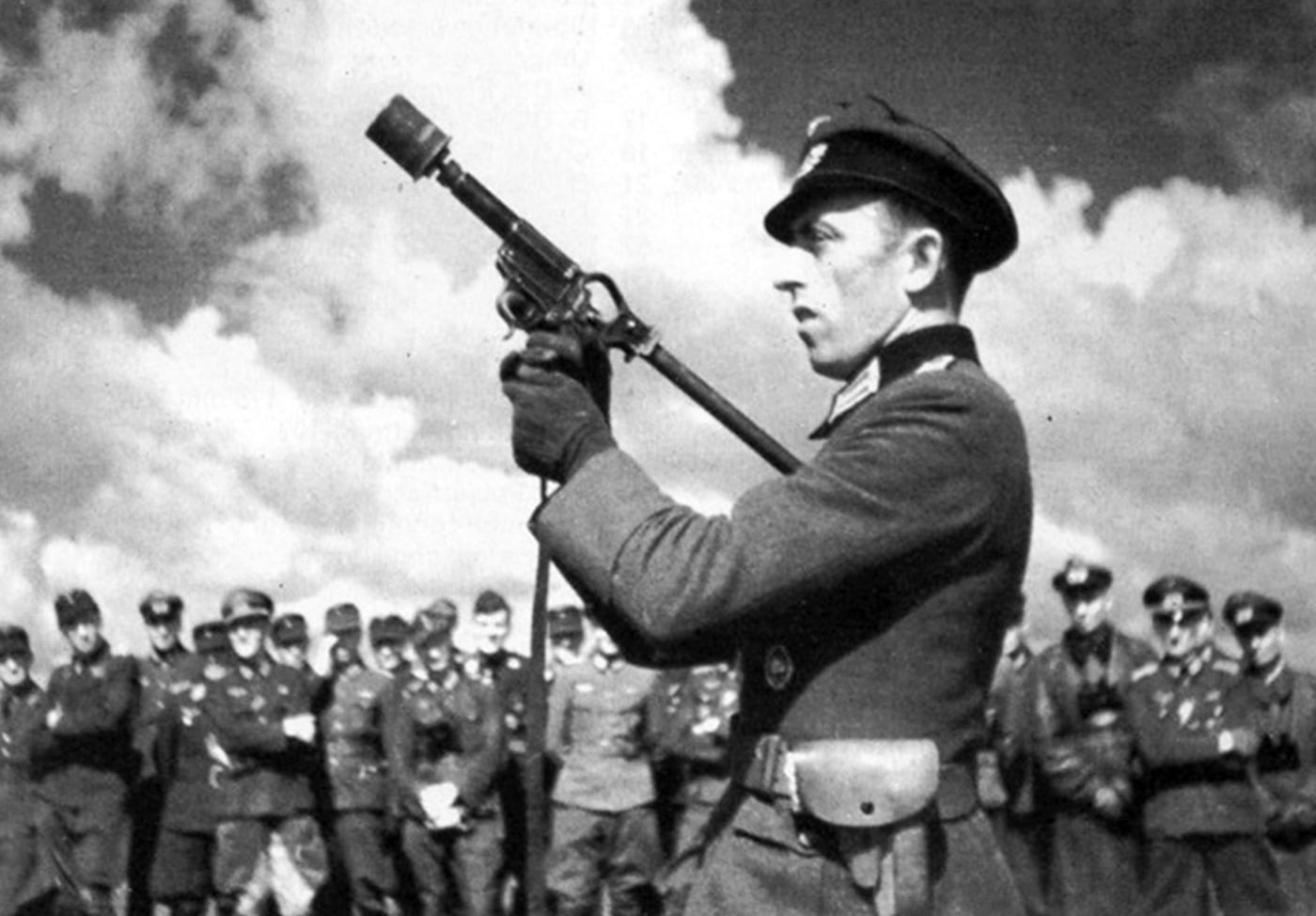The article titled "German Sturmpistole — An Assault Pistol for Anti-Tank Work?" explores the innovative yet impractical nature of the German Sturmpistole during World War II. The Sturmpistole was developed from the standard Wehrmacht flare gun, the Leuchtpistole 34, by rifling its barrel to fire explosive grenades. Known as the Kampfpistole when adapted to this use, the weapon's effective range was 50 to 150 yards, limiting its application. Its successor, the Sturmpistole, was equipped with a folding buttstock and clip-on sights, which theoretically enhanced stability and accuracy. Despite its innovations, the Kampfpistole struggled with practicality due to its limited range and the need for extreme proximity to targets.

As the war progressed, German forces increasingly confronted the inadequacies of their infantry anti-tank weapons against the Soviet T-34 and other tanks. This urgency drove the evolution of man-portable anti-tank weapons like the Sturmpistole, which was meant to fill this void but didn't effectively address the problem. Using the Panzerwurfkorper 42 HEAT (High Explosive Anti-Tank) grenade, the Sturmpistole theoretically could penetrate up to 80mm of armor plate but was limited to a shaky 70-yard range. The grenade launcher required close range and, ideally, a strike against the side or rear armor of a tank.
Ultimately, the Sturmpistole proved to be an anti-tank weapon of last resort, described in American Technical Intelligence reports as a curiosity rather than a practical battlefield solution. As the war turned, more efficient and cost-effective solutions, such as the disposable Panzerfaust and Panzerschreck rocket launcher, overshadowed the Sturmpistole. Despite its limited success, the Sturmpistole remains a fascinating study in German engineering and its drive to innovate even under dire circumstances. To learn more about this interesting weapon, read the full article: German Sturmpistole — An Assault Pistol for Anti-Tank Work?
No comments:
Post a Comment